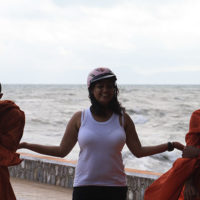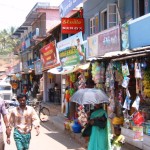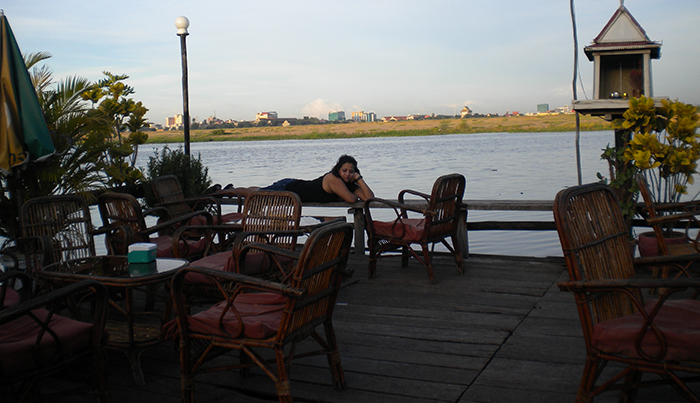| I liked to pretend that eating tarantulas was all right and after a while, I forgot that it was not, when I snapped the legs and put it into my mouth. |
I am of average intelligence, but that did not stop me from chucking logic out of the door to give in to my desire of riding the sea in the rains, buffeting winds and Everest-sized waves at Kep, a seaside town. Rain does something to me, but a sight of a turbulent sea and lightning flashes through the misty curtains of rain sent me scrambling to the sole boat swaying violently by the shore to inquire about a trip to Koh Tonsay (Rabbit Island), visible through the sheets of rain.
Steven decided to return. Bloody loser, I thought!
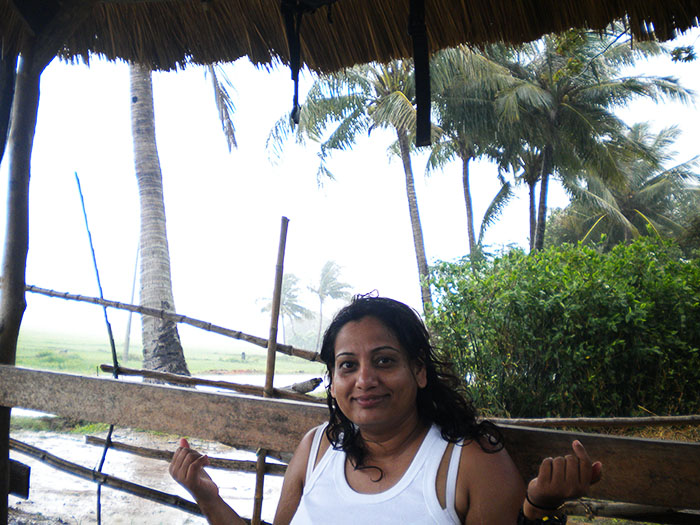
“Rabbit Island? No. Too much rain. Come tomorrow.”
Cambodian boatmen, it seemed, took a poor view of sea rides, preferring terra firma till the storm lasted, but in all its limitations, the idea of the great adventure now planted firmly in my mind wouldn’t leave till I had at least used every last trick I knew—in this case, extra dollars.
The boatman took on a more positive approach.
“No problem, rain not very strong. Let’s go.”
The sea between Kep and Rabbit Island wouldn’t sink a boat. The worst you could do was tip over and get very wet— which would add to the excitement, turning an otherwise boring boat ride into a memorable one. It was a game you couldn’t lose.
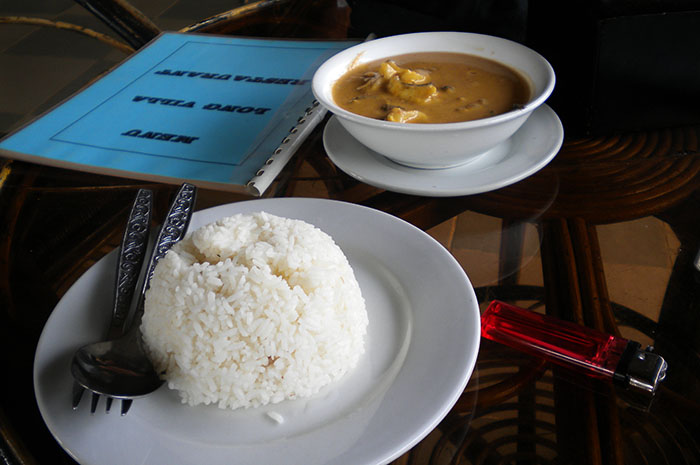
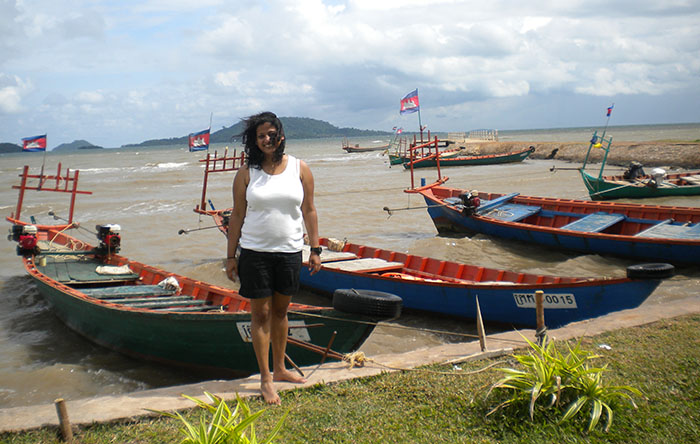
It is strange how the mind conceives innovative ways to foil the rain’s agenda of wetting everything in its presence. Securing my backpack in plastic sheets and fastening it to a life jacket was my idea, which had the boatman’s approval. He, I supposed, would agree to anything I said, thanks to the extra fare. There was a certain irony to it, though, as I’d refused to wear a raincoat. I longed for the rain and brine on my skin that would somehow help recreate the feeling of being cast out at sea, complete with the shivering and matted hair. Such scenarios always made good stories over a cuppa back on home turf.
The boatman and his assistant focused on the squall and sent up a prayer before kicking the motor to life. I did, however, put on the life jacket. The rain lent an eerie gloom to the approaching evening, but that didn’t take us off course.
The brave little boat ploughed through the sea, expertly cutting around rogue waves in perfect arcs, climbing and swerving to prevent being tipped over. Looking at her go, one would think she was born for this kind of life. The
only time I doubted her prowess was when she went parallel to the waves, rolling about so much that bad things happened to my lunch—when through the sheet of rains, the shoreline of Rabbit Island came into view.
Fear to ecstasy didn’t take long, doubled by the prospect of limping to the nearest bar and downing a few; perhaps tomorrow I could put my feet up and the worship the sun.
I swear we were close enough to walk to the island when I heard the engine die with a sickening sound; where was the anchor or the backup or whatever it is that one relies on in such times? With a horrible feeling, I braced myself for the worst. I think I also gave my beloved backpack a lingering look.
Then we went over.
Two days later, I returned to Kampot to attempt Bokor Hill. Two days, because after being fished out of water at Rabbit Island, lying in a hammock, eating crab and getting drunk had been the limit of my activities—something to forget the mishap. I was cured of every desire for sea adventure.
Bokor Palace and Hotel
Steven was very close to becoming a fixture at Cozy Elephant. Luckily in my absence, there was a surge of tourists and Cozy Elephant had its own little group anxious to trek up Bokor Hill.
Have I mentioned anywhere that you don’t need any particular excuse to visit Bokor Hill? Any reason, even the quirky ones like wanting to dine on the terrace of the dilapidated Bokor Palace and Hotel, will do. But you may recall that my recently developed ties with the supernatural was another of my reasons to be on that rumbling truck followed by the brief, sweaty episode of legging it up leech- infested jungles to find the ghosts of war and extract my sixteen dollars’ worth of thrill.
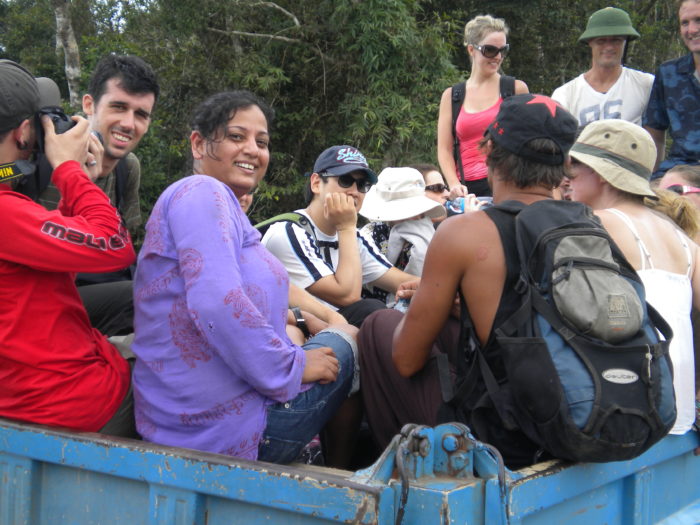
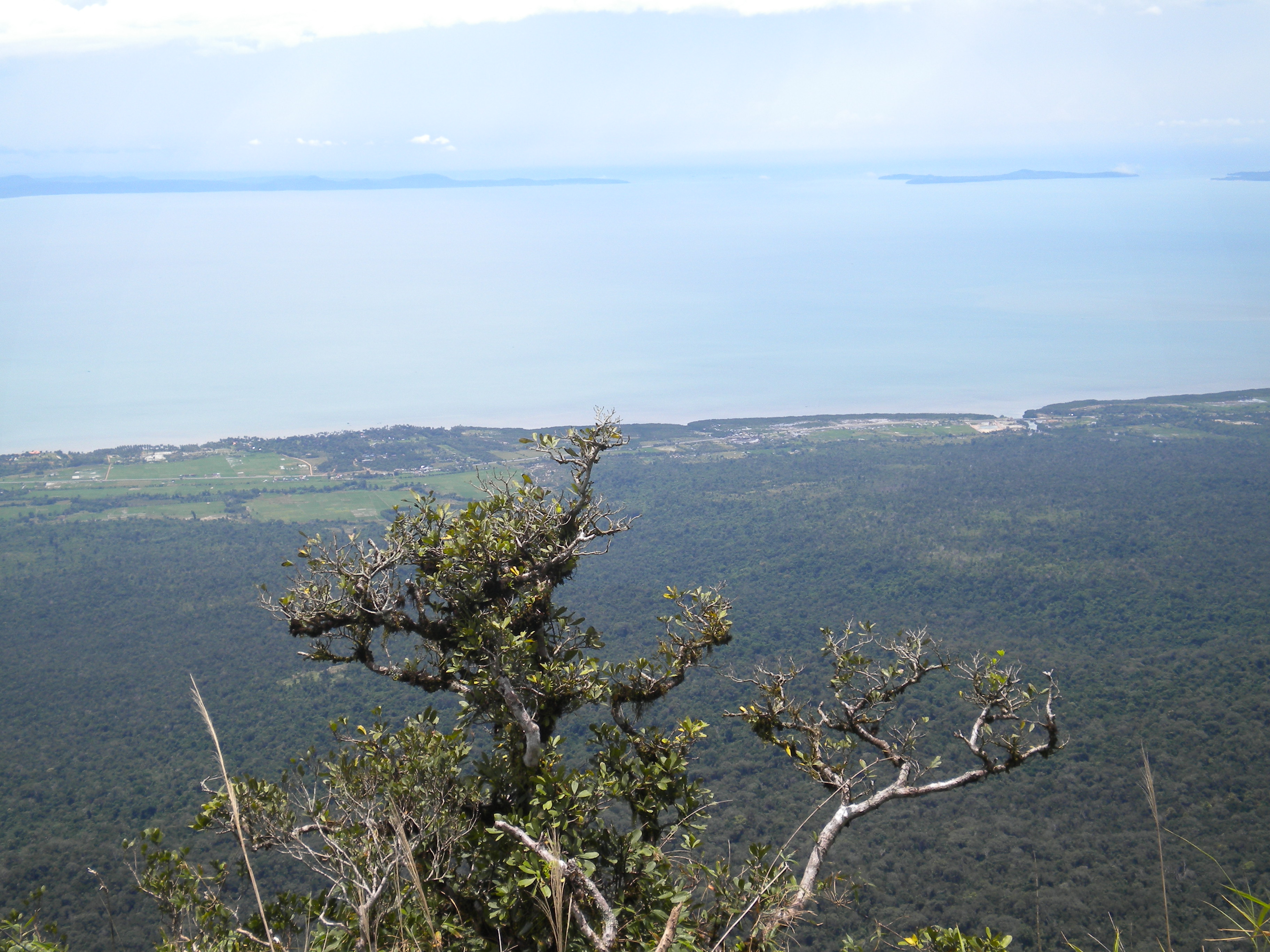
The climb was like sweating out your sins—amazing how fast my Kilimanjaro-resistant body had gone soft.
The walk—with our guides who were armed with guns— followed by the truck ride, put us in touch with Cambodia’s realities. But it also drove home the point that walking in the forest after rains was best not done in cut-off jeans, for leeches tended to ignore the ankles and attach themselves to your thighs, with special preference for the female pair.
The first thing we saw was the church and while the gun- wielding ranger, restored to his full importance, explained the history of Bokor to the tired group, I walked to the church to photograph it without getting someone’s face in the pictures and to fulfill a childish desire to shout and hear my voice reverberate like in any other church.
It did.

If you are full of the imaginative stuff, then Bokor, with a ghostly quality so hard to find in regular haunted places, is the place you could give it wings. Bokor was clearly the tops. You didn’t have to imagine what went on behind those gaping holes staring out of walls covered with ghostly red, for the place positively dripped with mystery and gore. And if you paid attention, you could even see ghouls sliding down the rotting banisters or sniggering in the fireplace, especially with the hill darkening as quickly as the clouds above.
It was really hard to imagine that years ago ladies in white gloves danced with men in tuxedos in a room lit by torches, while the tigers roared in the surrounding forests! A smile that started at the very thought quickly died when the two sinister words appeared on the wall.
“Everyone died.”
Those clearly were meant to do something to your blood. They did.
The wind picked up and in a matter of minutes, the hill was covered in mist. An unknown hand herded us together into a silent circle. Was it the wind whistling through the halls that caused that curious sound? The mind naturally imagines all kinds of things, and when you are thrown in a closed group, even the gentle sounds of breathing magnify into thunderclaps. And at such a time, if you suddenly get spattered with something cold and wet, it would take a lot to stop you from screaming.
For someone did scream.
***
Steve and I argued why anyone would put those two words on the wall and not stay around to see its effects on hapless visitors, or, for that matter, why would anyone put up a greeting that made you feel unwelcome?
The answer to that was found in cold lager at Rusty Keyhole, but we decided that getting over the horrors of Bokor required stronger stuff, and as I was to leave Kampot and Kep the following morning, there was no time to waste discussing the effects of sex on tired muscles when there was just barely time for sex.
My mind was at peace when travelling in the morning light, leading me deeper into the country in search of snakes and tarantula, (locally called a-ping), a desire which had been left unfulfilled in Kampot. I did miss Steven’s skinny body next to mine, especially when it rained.
It was easy to love Cambodia despite not knowing a lick of Khmer, the source of Cambodian coffee or a-ping, but I loved Cambodia because I had no expectations from it. It blew me away in an amazing sort of way. It was also a miser’s wonderland, in the sense that it was pretty inexpensive, and so a great place to nourish your inner cheapskate.
Only a week later, after drawing dud at Sihanoukville, I found a-ping at Central Market, Phnom Penh.
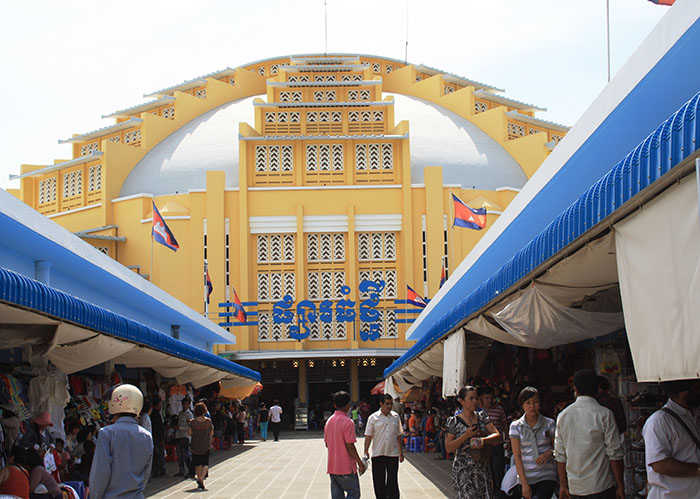
I could write a detailed chapter on eating tarantulas, but seeing that it may not go down well with arachnid lovers, I will limit it to a few hundred words.
In size, a live tarantula is about as big as the human palm, and when fried to a crisp, sells at about 300–400 Riel. How they turn into edible spiders from ugly, menacing creatures is simple—they are tossed into a mixture of sugar, salt and garlic and fried till they become stiff. Or at least till the legs do, because the stomach, no matter the hours of frying, remains soft and runny and not quite as delicious as the rest of its hairy body, but it has its takers too.
After the overkill of stir-fried morning glories, amok fish and banana flower salads across Cambodia, a-pings are a welcome change. I’m not sure when arachnids found their way to the Cambodian menu, but it has been said that when Khmer Rouge left the nation starving, people took to eating other life species to supplement their protein intake, kick- starting a whole new chapter on food.
If you are planning to indulge in these tasty tarantulas, prepare yourself beforehand.
Here is how you eat a-ping
Pick the crispiest critter (Longer frying reduces the tummy- squishiness). Eat them whole or pull off legs and eat them together. Putting too much of the creature into your mouth at once may cause gum-jabbing from various directions. Abdominal contents are gooey, so it’s really up to you to decide if you want to put that into your mouth. Every bite is a step towards a protein rich diet.
I liked to pretend that eating tarantulas was all right and after a while, I forgot that it was not, when I snapped the legs and put it into my mouth.
Here is a little video a local man helped me take. I wasn’t going to let that chance slip away!
|


